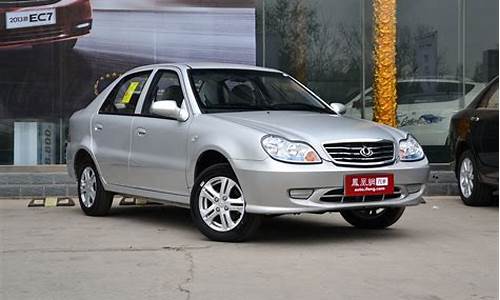您现在的位置是: 首页 > 汽车论坛 汽车论坛
materials today communications
ysladmin 2024-06-19 人已围观
简介materials today communications 下面,我将用我自己的方式来解释materials today communications的问题,希望我的回答能够对大家有所帮助。让我们开始讨论一下materials t
下面,我将用我自己的方式来解释materials today communications的问题,希望我的回答能够对大家有所帮助。让我们开始讨论一下materials today communications的话题。
1.腐蚀科学是一区顶刊吗
2.通用砸千亿猛追特斯拉背后,这款动力电池是关键
3.如何和父母沟通英语作文
4.跪求有关材料成型专业英语的文章带翻译的,1000英文左右,不胜感激!!!!!

腐蚀科学是一区顶刊吗
是。
《腐蚀科学》期刊(CorrosionScience)是材料科学领域的一本权威期刊,是由Elsevier出版集团出版的MaterialsToday系列期刊之一。该期刊创刊于1961年,专注于研究金属和合金、聚合物和复合材料、陶瓷和别的无机非金属材料的腐蚀和防护方面。影响因子较高,被广泛认可为材料科学领域重要的一区顶级期刊之一。研究者常常作为发表高质量论文的首选期刊之一,关注该期刊上的最新研究成果。
通用砸千亿猛追特斯拉背后,这款动力电池是关键
Mass communication is the term used to describe the academic study of the various means by which individuals and entities relay information through mass media to large segments of the population at the same time. It is usually understood to relate to newspaper and magazine publishing, radio, television and film, as these are used both for disseminating news and for advertising.
Contents [hide]
1 Field of study
2 The terms 'Mass' and 'Communication'
3 Characteristics of Mass Communication
4 Notes
5 References
[edit] Field of study
Tuba Nacar - Mass communication research includes media institutions and processes such as diffusion of information, and media effects such as persuasion or manipulation of public opinion. In the United States, for instance, several university journalism departments evolved into schools or colleges of mass communication or "journalism and mass communication". In addition to studying practical skills of journalism, public relations or advertising, they offer programs on "mass communication" or "mass communication research." The latter is often the title given to doctoral studies in such schools, whether the focus of the student's research is journalism practice, history, law or media effects. Departmental structures within such colleges may separate research and instruction in professional or technical aspects of mass communication.
With the increased role of the Internet in delivering news and information, mass communication studies and media organizations tend to focus on the convergence of publishing, broadcasting and digital communication.
The academic mass communication discipline historically differs from media studies and communication studies programs with roots in departments of theatre, film or speech, and with more interest in "qualitative," interpretive theory, critical or cultural approaches to communication study. In contrast, many mass communication programs historically lean toward empirical analysis and quantitative research -- from statistical content analysis of media messages to survey research, public opinion polling, and experimental research.
Interest in "New Media" and "Computer Mediated Communication" is growing much faster than educational institutions can assimilate it. So far, traditional classes and degree programs have not been able to accommodate new shifts of the paradigm in communication technologies. Although national standards for the study of interactive media have been present in the U.K. since the mid-nineties, course work in these areas tends to vary significantly from university to university.
Graduates of Mass Communication programs work in a variety of fields in traditional news media and publishing, advertising, public relations and research institutes.
Such programs are accredited by the Accrediting Council on Education in Journalism and Mass Communication[1]. The Association for Education in Journalism and Mass Communication[2] is the major membership organization for academics in the field, offering regional and national conferences and refereed publications. The International Communication Association[3] and National Communication Association (formerly the Speech Communication Association) include divisions and publications that overlap with those of AEJMC, but AEJMC historically has stronger ties to the mass communication professions in the United States
[edit] The terms 'Mass' and 'Communication'
The term 'mass' denotes great volume, range or extent (of people or production) and reception of messages.[4] The important point about 'mass' is not that a given number of individuals receives the products, but rather that the products are available in principle to a plurality of recipients.[5]
The term 'mass' suggests that the recipients of media products constitute a vast sea of passive, undifferentiated individuals. This is an image associated with some earlier critiques of 'mass culture' and Mass society which generally assumed that the development of mass communication has had a largely negative impact on modern social life, creating a kind of bland and homogeneous culture which entertains individuals without challenging them.[6] However, with the advancement in Media Technology, people are no longer receiving gratification without questioning the grounds on which it is based.[7] Instead, people are engaging themselves more with media products such as computers, cell phones and Internet. These have gradually became vital tools for communications in society today.
The aspect of 'communication' refers to the giving and taking of meaning, the transmission and reception of messages. The word 'communication' is really equated with 'transmission', as viewed by the sender, rather than in the fuller meaning, which includes the notions of response, sharing and interaction. [8] Messages are produced by one set of individuals and transmitted to others who are typically situated in settings that are spatially and temporally remote from the original context of production. Therefore, the term 'communication' in this context masks the social and industrial nature of the media, promoting a tendency to think of them as interpersonal communication.[9]Furthermore, it is known that recipients today do have some capacity to intervene in and contribute to the course and content of the communicative process.[10] They are being both active and creative towards the messages that they are conveyed of. With the complement of the cyberspace supported by the Internet, not only that recipients are participants in a structured process of symbolic transmission[11], constraints such as time and space are reordered and eliminated.
'Mass communication' can be seen as institutionalized production and generalized diffusion of symbolic goods via the fixation and transmission of information or symbolic content. It is known that the systems of information codification has shifted from analog to digital.[12] This has indeed advanced the communication between individuals. With the existence of Infrared, Bluetooth and Wi-Fi, cell phones are no longer solely a tool for audio transmission. We can transfer photos, music documents or even games and email at any time and anywhere. The development of media technology has indeed advanced the transmission rate and stability of information exchange.
[edit] Characteristics of Mass Communication
Five characteristics of mass communication have been identified by Cambridge University's John Thompson. Firstly, it "comprises both technical and institutional methods of production and distribution"[13]. This is evident throughout the history of the media, from print to the Internet, each suitable for commercial utility.
Secondly, it involves the "commodification of symbolic forms",[14] as the production of materials relies on its ability to manufacture and sell large quantities of the work. Just as radio stations rely on its time sold to advertisements, newspapers rely for the same reasons on its space.
Mass communication's third characteristic is the "separate contexts between the production and reception of information",[15] while the fourth is in its "reach to those 'far removed' in time and space, in comparison to the producers".[16]
Mass communication, which involves "information distribution". This is a "one to many" form of communication, whereby products are mass produced and disseminated to a great quantity of audiences.
如何和父母沟通英语作文
动力电池技术正在发生一场深远的变革,磷酸铁锂电池、三元锂电池之后,四元锂电池也在本月驶入产业视线内。2020年3月4日,通用的“EV?week”活动上,通用与它的合作伙伴LG化学一同推出一款新的电池产品Ultium。
▲通用新电池Pack
这款产品的核心并不是被外界吹得神乎其神的电池包技术,其关键在于,Ultium电池的电芯将会使用LG化学最新研发的NCMA四元锂电池。
这款电池的技术原理是通过向NCM三元锂正极材料,混入少量的铝元素,使原本性质活跃的高镍三元正极材料在保持高能量密度的同时,也能维持较稳定的状态。
可以认为,NCMA四元锂电池解决了当下三元锂电池面临的诸多疑难杂症。
与NCM/NCA三元正极材料相比,NCMA四元正极材料在多轮充放电循环后,H2-H3(指正极材料微裂纹增加到难以复原的状态,引起电池内部参数变化)的不可逆相变电压保持稳定,材料内部微裂纹较少,正极材料中过渡金属的溶解情况不明显。同时,NCMA正极材料的放热峰值温度也更高,热稳定性更强。
值得注意的是,NCMA四元正极材料中,成本最为昂贵的钴元素,含量从NCA/NCM?622中的20%下降至5%,成本进一步降低。按照LG与通用公布的数字,NCMA四元电池的量产成本为100美元(约合人民币694元),而此前,LG化学NCM?622的量产成本约为148美元(约合人民币1027元)。
高能量密度、高稳定性、低成本,原本在NCA/NCM三元锂电池上难以同时实现的特性,在NCMA四元锂电池上达成,对于动力电池产品而言,NCMA的量产将会掀起一股技术路线升级的浪潮。
在这股浪潮之中,上游矿业与中游材料商向下游提供的产品必须快速迭代,动力电池企业的技术路线也必须做出新的选择,而新能源整车厂则需要为新的电池技术进行车型的适配,整个新能源产业链都将受到巨大的影响。
一、解密NCMA电池技术原理?已成高能量密度电池有效解决方案
NCMA四元锂电池并不是一项全新的动力电池技术。
从材料构成上来看,这一技术是基于目前两大主流三元锂电池体系NCM与NCA混合而成。
而从电池结构上来看,它也并不像固态电池、锂硫电池、锂空气电池一样对电池主体结构进行改变。
但这项技术却有引领三元锂电池迈向下一个阶段的潜力。
▲通用与LG合作的电?
从本质上来看,所谓NCMA四元锂电池,就是使用了NCMA四元正极材料的电池体系。
其原理,是在原本的NCM三元正极材料中混入微量的过渡金属铝,形成四元正极,以保证在正极富集镍元素的同时,电池的稳定性与循环寿命不受影响。
在这一转变过程中,原本NCM三元体系的Li[Ni-Co-Mn]O2正极材料体系变成了Li[Ni-Co-Mn-Al]O2(正极材料的化学构成发生了改变)。
过渡金属铝元素的加入所形成的Al-O化学键强度远大于Ni(Co,Mn)-O化学键,从化学性质上增强了正极的稳定性,进而使得NCMA四元电池H2—H3不可逆相变的电压在经过多次循环后仍然保持稳定状态,且Li元素在正极的脱嵌过程中不易释放氧元素,减少了过渡金属的溶解,提升了晶体结构的稳定性。
而稳定的晶体结构则减少了充放电循环过程中,正极材料微裂纹的形成,正极阻抗的上升速度得到抑制。
与此同时,有研究表明,NCMA的正极材料放热峰值反应温度为205摄氏度,高于NCA正极材料的202摄氏度与NCM正极材料的200摄氏度,这意味着NCMA正极材料的热稳定性更加优秀。
这一特性对于目前动力电池正极高镍路线而言十分关键。
随着电动汽车续航里程的市场需求从早期的300公里不到,到如今的600+公里,三元锂电池的能量密度不断推高,高镍路线不断明确。
▲使用新型电池的Model?3续航将接近600公里
现阶段NCM/NCA?811三元锂电池中,正极的活性物质镍元素的摩尔比已经超过了8成,这一类电池被称为8系三元锂电池。
而在8系三元锂电池之后,镍元素含量超过90%的9系三元锂电池正在蓄势待发。据高工锂电报道,知名锂电材料供应商格林美目前已经完成了镍元素摩尔比例分别达到90%、92%、95%的Ni90、Ni92、Ni95等三元前驱体材料的研发与量产。
不过,看似美好的技术前景背后,隐忧也在不断浮现。
有研究表明,随着三元锂电池正极材料中镍元素的富集,电池的容量保持能力与热稳定性出现了下滑。
当NCM三元锂电池正极的镍含量超过60%,NCA三元锂电池正极的镍含量超过80%,在经过一定次数的循环后,电池正极材料中的微裂纹显著增加,电极阻抗增大,正极开始向电芯中析出大量的氧气。
这一现象直接导致了高镍三元锂电池容量的快速衰减与安全隐患的增加,近年来不断出现的电动汽车自燃事故大多与动力电池的安全隐患有关。
无论是改良电池包形态,还是调整电池管理系统,对于这一情况的缓解都只是杯水车薪。在这样的节点上,动力电池产业开始从材料出发,摸索更具前景的动力电池解决方案。
NCMA四元锂电池正是在这一过程中诞生的技术方案,其稳定的理化结构能够支撑起动力电池未来的高镍路线。
同时,相对廉价的铝元素的混入,大幅减少了动力电池正极中昂贵的钴元素的含量,对于动力电池的降本也十分有效。
无论是技术路线,还是市场层面,NCMA四元锂电池的未来前景都十分广阔。可以认为,四元锂电池是全固态电池诞生之前,最具变革意义的电池技术,动力电池新一轮的技术浪潮将由此开启。而在这轮浪潮中,率先拿出四元锂电池成品的通用与LG无疑是领先了一步。
二、韩国电池专家证明NCMA电池三大优点
目前,韩国汉阳大学锂电专家Un-Hyuck?Kim已经通过实验,证明了NCMA四元锂电池在高镍技术路线上的优异性能。
2019年4月2日,Un-Hyuck?Kim团队在美国化学学会期刊(ACS)上发表了一篇名为《锂离子电池四元分层富镍NCMA正极》的论文。
论文从容量衰退情况、H2-H3的不可逆相变电压变化情况、正极颗粒微裂纹情况、锂离子脱嵌时氧的释放情况以及热稳定性等五个方面对比了镍含量90%左右的NCM、NCA、NCMA正极材料的性能。
1、NCMA四元锂电池容量衰退情况不明显
为防止实验出现误差,Un-Hyuck?Kim团队对2032组电池进行了对照试验。
▲电池容量衰减对比实验数据
在30摄氏度,0.1C的实验条件下,这些电池被置于2.7V-4.3V的电压之间进行循环的初始充放电测试。
其中,镍含量90%的NCM90电池拥有229mAh/g的初始放电容量,镍含量89%的NCA89与NCMA89则分别拥有225mAh/g与228mAh/g的初始放电容量。
可以发现,三种高镍电池的初始放电容量非常接近,但在经过100次充放电循环后,NCMA89电池的放电容量下降至原先的90.6%,而NCM90与NCA89的放电容量则分别下降至原先的87.7%、83.7%。
而在同样温度、同样电压的情况下,将放电倍率提升至0.5C,再对同样(全新)的电池组进行试验。
在经历100次循环后,NCMA89、NCM90、NCA89的放电容量分别下降至原先的87.1%,82.3%和73.3%。
为更接近实际情况,Un-Hyuck?Kim团队将电池置于25摄氏度、1C、3.0V-4.2V的环境中又进行了1000次的充放电实验。
这次的结果是,NCMA89电池维持了84.5%的初始容量,NCM90电池与NCA89电池的容量分别下降至初始的68.0%和60.2%。
由此可见,NCMA四元锂电池在高镍路线上的稳定性远优于NCM与NCA三元锂电池,越是接近实际的使用情况,这一优势也越发明显。
2、NCMA四元锂电池结构更加稳定
电池容量的衰减在正极材料这一块,主要体现在H2-H3的不可逆相变与正极材料微裂纹方面。
▲三种电池H2-H3不可逆相变情况
所谓H2-H3的不可逆相变,主要是用来体现正极晶格的变化与锂离子嵌入、脱嵌过程的可逆性(氧化还原峰)。
H1-H2的过程通常是可逆的,而一旦电极出现H3相,则是出现了不可逆的变化,锂离子嵌入与脱嵌的能力都会有所损失,当电压超过一定值,亦或放电倍率达到一定的倍率,H3相便会出现。
因此,对电池性能的考量会体现在出现H3不可逆相变的电压数值变化与氧化还原峰的变化上。
通过对NCMA89、NCA89、NCM90三类电池进行100次的充放电循环测试,Un-Hyuck?Kim团队发现,只有NCMA89的H2-H3不可逆相变的电压几乎维持在了初始的状态,而NCM90与NCA89电池的H2-H3不可逆相变的电压均出现了不同程度的下滑,氧化还原峰下降。
即是说,在多次的循环中,NCA与NCM正极材料的电池更容易出现H3相,可逆性出现下滑。
在正极材料的微裂纹方面,不同材料的属性也有所不同,但微裂纹的出现将会影响电极的阻抗,一旦阻抗增大,对于电池的电流充放都会造成影响。
▲三种电池正极材料微裂纹情况,上下两排从左至右依次是NCA89电池、NCM90电池、NCMA89电?
上文描述中已经提到,NCMA89电极较难出现H2-H3的不可逆相变,其具备较强的机械稳定性。Un-Hyuck?Kim团队的实验也证明了这一点,在多次充放电循环后,NCMA89电池正极材料的微裂纹明显少于NCM90与NCA89电池。
除此之外,锂离子脱嵌过程中释放的氧也会溶解过渡金属,导致正极材料结构不稳定。
Un-Hyuck?Kim团队通过密度泛函理论(DFT)对NCMA89、NCM90、NCA89电池的氧空位能进行了计算,发现三者的氧空位能分别为0.80eV、0.72eV和0.87eV。
从这一数值可以看出,Al-O化学键稳定的NCA89电池最不容易发生氧的释放,NCMA89电池同样较为稳定,而NCM90电池氧的释放所需要的能量最少,最容易导致正极材料结构发生变化。
3、NCMA正极材料热稳定性更强
考虑到电极材料的热稳定性对于电池安全的影响也极为重要,Un-Hyuck?Kim团队还采用差示扫描量热法(DSC)对正极材料放热反应的峰值温度进行了测量。
测量结果显示,NCA89电池正极放热反应的峰值温度为202°C,发热量为1753J/g,而NCM90电池正极显示的峰值温度为200°C?,发热量为1561J/g。相比之下,NCMA89电池的正极放热反应峰值温度为205°C,而发热量仅为1384J/g,NCMA四元锂电池的热稳定性明显优于另外两类电池。
综合多次充放电循环后的容量衰退,H2-H3的不可逆相变、正极材料微裂纹、锂离子脱嵌时氧的释放情况以及热稳定性等五个方面的测试,Un-Hyuck?Kim团队最终证明了NCMA正极材料在高镍路线上的优异表现。
三、NCMA正极材料短期量产成本较高?但长期成本更优
但现阶段的NCMA四元锂电池并非完全没有缺点,首先,NCMA四元锂电池的核心——正极材料的制备工艺要比NCM与NCA电池更为复杂。
Un-Hyuck?Kim团队在2019年3月发布于Materialstoday的论文《成分与结构重新设计的高能富镍正极,用于下一代锂电池》。
▲Un-Hyuck?Kim团队发布的论文
论文中提到,NCMA正极材料的制备步骤大致可分为六个阶段:
1、使用硫酸镍溶液与硫酸钴溶液通过共沉淀法制备球形NC-NCM[Ni?0.893?Co?0.054?Mn?0.053?](OH)2前体,用作制备[Ni?0.98?Co?0.02?](OH)2的起始材料,并加入间歇反应器。
2、在惰性气体(氮气)环境下,连续在间歇反应器中加入特定量的去离子水、氢氧化钠溶液、氢氧化氨溶液,同时,将定量的氢氧化钠溶液与足量的氢氧化氨溶液(螯合剂)泵入反应器。
3、在合成过程中,最初形成的[Ni0.98Co0.02](OH)2颗粒逐渐变成球形。
4、为构建NC-NCM结构,将定量的硫酸镍溶液,硫酸钴溶液与硫酸锰溶液(Ni:Co:Mn=80:9:11,摩尔比)引入反应器,制成[Ni?0.80?Co?0.09?Mn?0.11](OH)2,通过调整原料用量,最终获得[Ni?0.893?Co?0.054?Mn?0.053?](OH)2粉末。
5、将粉末过滤,洗涤,并在真空110摄氏度的环境下干燥12小时。
6、为了制备Li?[Ni?0.886?Co?0.049?Mn?0.050?Al?0.015?]?O?2,将前体([Ni?0.893?Co?0.054?Mn?0.053?](OH)2)与LiOH·H?2?O和Al(OH)3?·3H2O混合,并在纯氧730摄氏度环境下煅烧10小时。
如果是进行NCM正极材料的制备,可以省去步骤6中加入铝的步骤;而如果是进行NCA正极材料的制备,则可以省去步骤4。
因此,NCMA正极材料的生产工序要比NCM与NCA正极材料的生产工序都更复杂,其短期生产成本必然会更高。
与此同时,铝的用量也需严格控制,用料过多或过少都会影响电池的能量密度,并使稳定性出现衰减,这一工序的引入对生产工艺无疑提出了更严格的要求。
但从长期的角度来看,铝的引入减少了钴的使用,以LG化学与通用合作的Ultium电池为例,该电池中钴元素的含量减少了70%。
而这一情况则能够降低动力电池的生产成本,据了解,2019年7月钴湿法冶炼中间品进口均价19707美元/吨(约合人民币13.7万元/吨),而良品铝矾土的价格大约在1200元/吨。
生产工艺的复杂或许会短暂延缓NCMA电池占领市场的脚步,但长期的利益还是会驱使动力电池厂与车企使用NCMA四元锂电池。
四、NCMA电池2021年量产?材料商、电池厂、整车厂纷纷布局
目前来看,虽然NCMA仍处于产业化的初期,但已经有多家公司进入这一领域进行布局,从公司属性来看,可以分为三类玩家:锂电材料供应商、动力电池企业、整车厂。
1、锂电材料供应商
根据公开信息,锂电材料供应巨头Cosmo?AM&T、格林美已经率先在这一领域进行布局。
Cosmo?AM&T是LG化学NCMA四元锂电池正极材料的主要供应商,该公司表示,其目前正在研究NCMA高镍正极材料,其中镍含量达到92%,正极能量密度为228mAh/g。
该公司预计会在2021年实现四元正极材料的量产,在量产后会首先与LG化学进行验证,不过该公司在正极材料方面也与三星SDI达成了合作,因此也很可能会向三星SDI供应NCMA正极材料。
而格林美日前在回答投资者提问时也曾透露,公司完成了四元正极材料的研发与量产工作,正在与客户进行吨级认证。
除此之外,企查查显示,美国新能源材料初创公司林奈新能源在中国的分公司申请了四元正极材料的专利,并于2019年2月5日公开了公告。
2、动力电池企业
目前布局NCMA四元锂电池的动力电池企业主要是中韩电池企业。
在中国动力电池企业中,国轩高科与蜂巢能源率先进行了四元锂电池的布局。
蜂巢能源在2019年7月的发布会上发布了NCMA四元锂电池产品,据了解,该产品自2018年3月在蜂巢内部立项,经历了16个月的研发得以面世。
▲蜂巢能源发布会
但目前,蜂巢能源还不具备四元锂电池的量产能力,蜂巢能源总经理杨红新表示,该公司会在2019年第四季度完成NCMA四元正极材料的产能布局,初期产能每年100吨。而到2021年,蜂巢能源就会正式量产NCMA四元锂电池。
国轩高科则没有这么高调,企查查信息显示,2016年,国轩高科申请了两款四元锂电池的制备方法专利,两项专利分别于2018年与2019年获得发明授权。
但国轩高科的技术路线相对小众,其申请的是NCAT(镍钴铝钛)与NCMT(镍钴镁钛)正极材料的制备专利。
宁德时代暂时没有对外宣布会进行NCMA电池的研发,但考虑到格林美是其正极材料的供应商之一,因此宁德时代同样有可能在暗中进行NCMA电池的研发工作。
韩国电池企业中,LG化学率先宣布将会量产NCMA四元锂电池,并将其运用到与通用合作的Ultium电池组中。Lg化学表示,这款电池的能量密度将会达到200mAh/g(并未透露是否是电芯能量密度)。
3、整车厂
目前明确表态将使用NCMA四元锂电池的整车厂只有通用一家,该公司在3月4日开幕的“EV?week”上公布了与LG化学合作研发电池的项目,而该项目的核心就是NCMA电池与Ultium电池组技术。
据了解,通用将会在其最新的电动汽车平台上使用该电池,为不同的车型提供50kWh-200kWh的电池组,电池组的成本将会下降至100美元/kWh(约合693元/kWh)。
▲通用全新电动车平台
如果计划顺利,通用未来3年将会推出20款电动汽车,并在2025年达到100万辆电动汽车的销量。
一旦通用借助NCMA电池实现了电动化的成功转型,各大车企也会争相进行效仿,布局NCMA四元锂电池的车企将会大量增加。
锂电材料商、动力电池企业、整车厂三方入局,意味着NCMA四元锂电池方案很有可能会成为未来动力电池的备选方案之一。
如果顺利实现大规模商用,这一产品将会对上游矿业、中游动力电池企业、下游整车厂造成影响。
对于上游矿业而言,钴矿需求量大幅减少,一度处于高位的钴价有可能出现大幅下滑。
对于动力电池企业而言,新一轮技术的迭代将会为头部动力电池企业带来福利,谁先布局的企业将能够抢占第一拨市场,而晚布局的企业则可能面临落后或是被淘汰的情况。
对于整车厂而言,NCMA四元锂电池由于减少了钴的用量,成本大幅降低,车企生产电动汽车的成本压力下降。并且NCMA电池拥有更加优秀的循环寿命与稳定性,电动汽车产品的可靠性将会得到提升。
结语:四元电池时代将至?
通用与LG合作的四元锂电池很有可能会掀起一轮动力电池的产业变革,对比NCM/NCA三元锂电池产品,四元锂电池有着循环寿命更长、安全性优秀、成本更低等优点。对于车企和电池厂而言,这些优点意味着四元锂电池是一个难以拒绝的选项。
但不到大规模量产,四元锂电池的命运尚且无法盖棺定论,三元锂电池后续的发展路线众多,且新的技术在生产工艺、材料等方面均有变革。
单从材料来看,镍锰酸锂“无钴”电池、锂硫电池、锂空气电池都是成为四元锂电池的潜在竞争者,这些电池产品对比目前的三元锂电池同样有着不小的性能优势。
只能说,四元锂电池是目前相对而言接近量产的三元锂电池替代方案,后续情况仍需持续观望。
本文来源于汽车之家车家号作者,不代表汽车之家的观点立场。
跪求有关材料成型专业英语的文章带翻译的,1000英文左右,不胜感激!!!!!
和父母沟通英语的作文如下:?
The world today is a very competitive place. Therefore, it is necessary to develop some skills to increase one’s chances of success.?
Many skills, for example, leadership, a second language, and technical skills such as computer programming, are very useful today. However, I believe that the most useful skill is the ability to communicatewell with others.
It is impossible to overstate the importance of good communication skills. In today’s society we have to work cooperatively with others. A good communicator finds it easier to put forth his ideas clearly.?
In this way there will be fewer misunderstandings, which can lead to bad feelings as well as lost time and effort. In addition, a person with good communication skills is a good mediator and negotiator.?
He or she can play a valuable role in resolving disputes and enhancing cooperation. This means that a good communicator is often a natural leader. Finally, with good communication skills, it is easier to persuade others to accept your point of view.?
Having your views and plans approved of by others is a vital step on the way to success.
For all the above reasons, it is my belief that strong communication skills are the most important to have. Good communication is important in all situations, so a skillful communicator will always be in high demand. From joozone.com.
以上内容参考:百度文库-我们要多与父母沟通交流的英语作文
洛阳理工学院 机电工程系 材料成型教研室
Unit 3 Structure-Property Relationships of Materials
Today’s materials can be classified as metals and alloys, as polymers or plastics, as ceramics, or as composites; composites, most of which are man-made, actually are combinations of different materials.
译文:当今的材料可以分为金属和合金,聚合物或者塑料,陶瓷或复合材料;复合材料,它们大多数是人造的,实际上是不同材料组合而成。
Application of these materials depend on their properties; therefore, we need to know what properties are required by the application and to be able to relate those specification to the material.
译文:这些材料的应用取决于它们的性质;因此,根据应用的场合,我们需要知道什么样的性质是必需的,我们需要能够把这些详细说明同材料联系起来。
For example, a ladder must withstand a design load, the weight of a person using the ladder. However, the material property that can be measured is strength, which is affected by the load and design dimension. Strength values must therefore be applied to determined the ladder dimensions to ensure safe use. Therefore, in general, the structures of metallic materials have effects on their properties.
译文:比如,一个梯子必须能经受住设计的载荷,也就是使用这个梯子的人的重量。然而,能够测量的材料的性质是强度,它为载荷和设计尺寸所影响。强度值因此被用来判定梯子的尺寸大小以保证安全使用。因此,通常说来,金属材料的结构对它们的性质有影响。
In a “tensile test” a sample is gradually elongated to failure and the tensile force required to elongate the sample is measured using a load cell throughout the test. The result is a plot of tensile force versus elongation.
译文:在一个张力测试实验中,样品缓慢地拉长直到失败,并且拉长样品所必需的拉力在整个测试过程中,用测压元件测量。结果是拉力同伸长度之间的一个图。
The problem is that the load required to elongated the sample by a certain extent depends upon the dimension of the sample. This would be a big problem if , for example, mechanical property data were to be used to design a bridge, since it is clearly impossible to test an entire bridge. Thus what is clearly needed is to make the data from the tensile test independent of the size of the sample.
译文:问题是,拉伸样品到一定程度所必需的载荷取决于样品的尺寸。比如,如果机械性质的数据被用于设计一座桥梁,既然测试整个桥梁是明显不可能的,这样,明显需要的就是从与样品尺寸无关的拉伸实验中获得数据。
Thus, what is clearly needed is to make the data from the tensile test independent of the size of the sample. To achieve this end, we use “stress” and “strain”.The “true” stress( ) is defined as : ,where F=force applied to the sample at any given instant and A= current cross-sectional area of the sample.
好了,今天关于“materials today communications”的探讨就到这里了。希望大家能够对“materials today communications”有更深入的认识,并且从我的回答中得到一些帮助。









